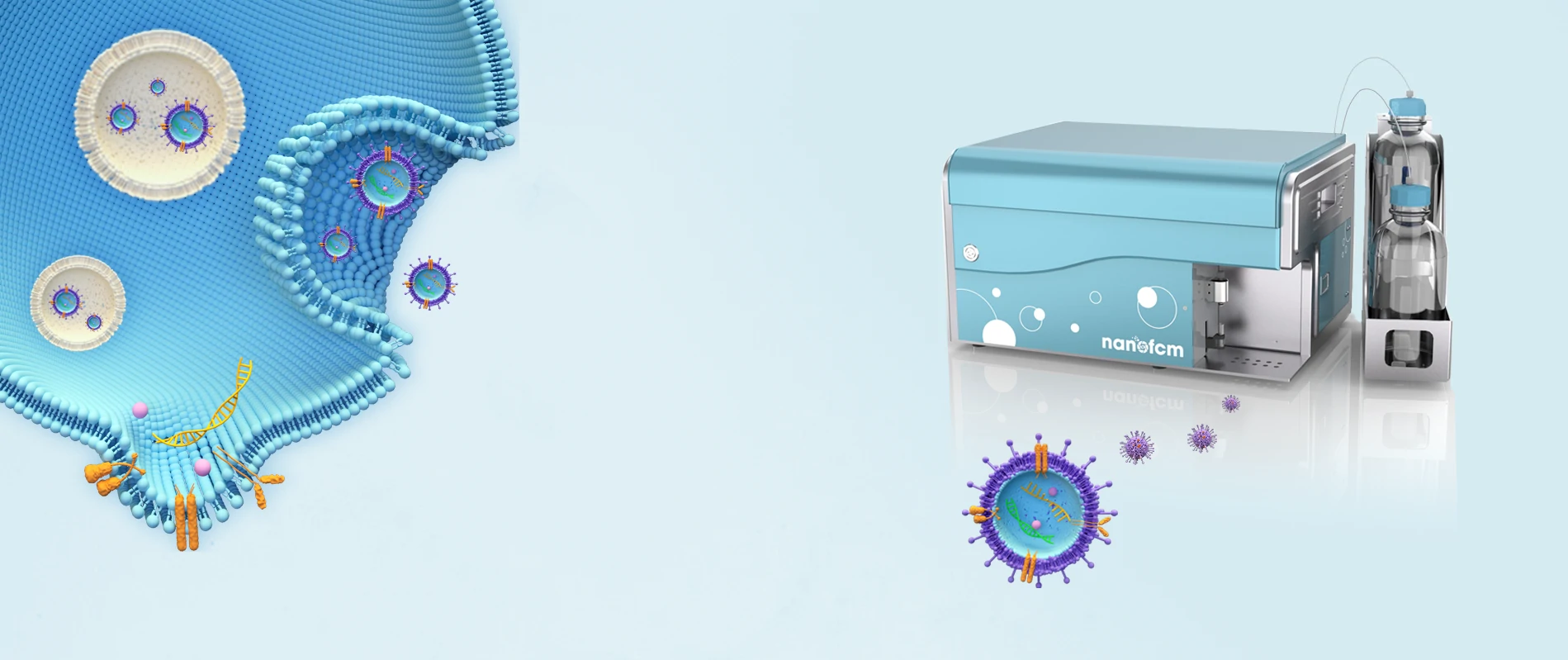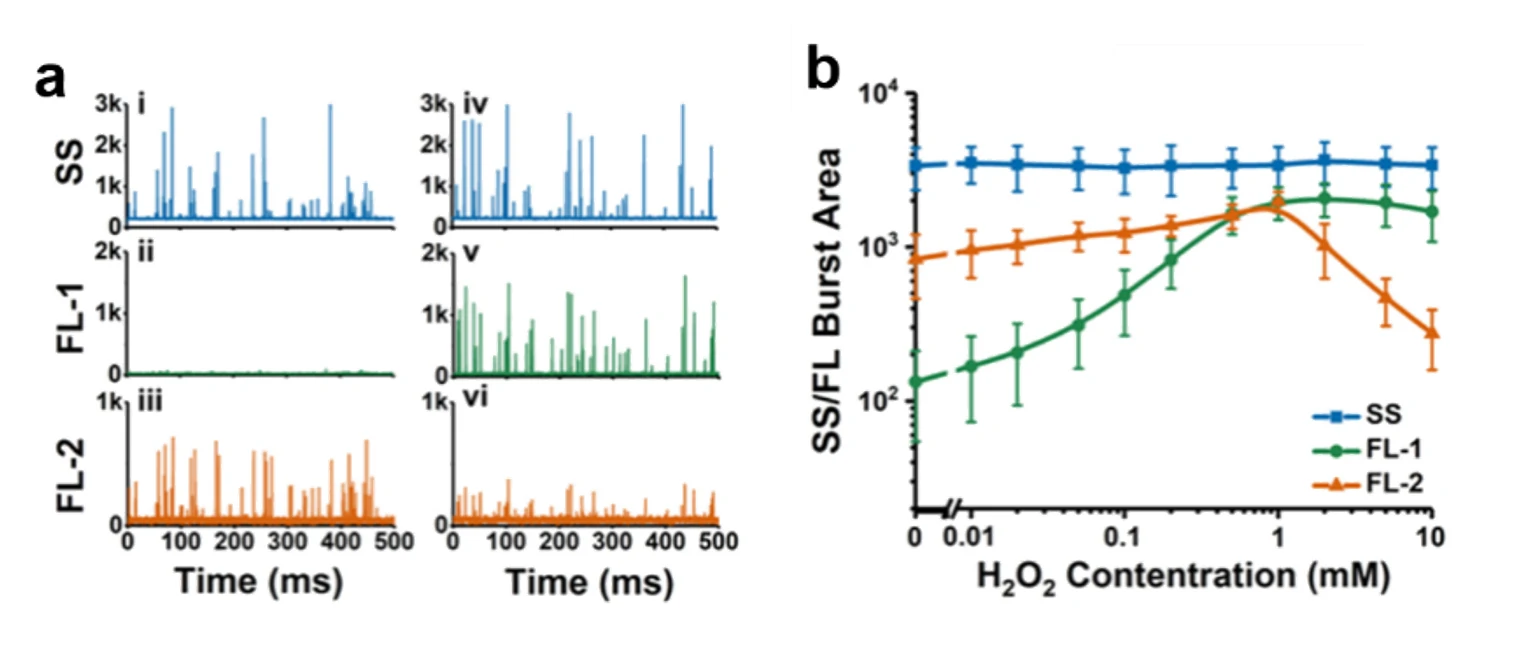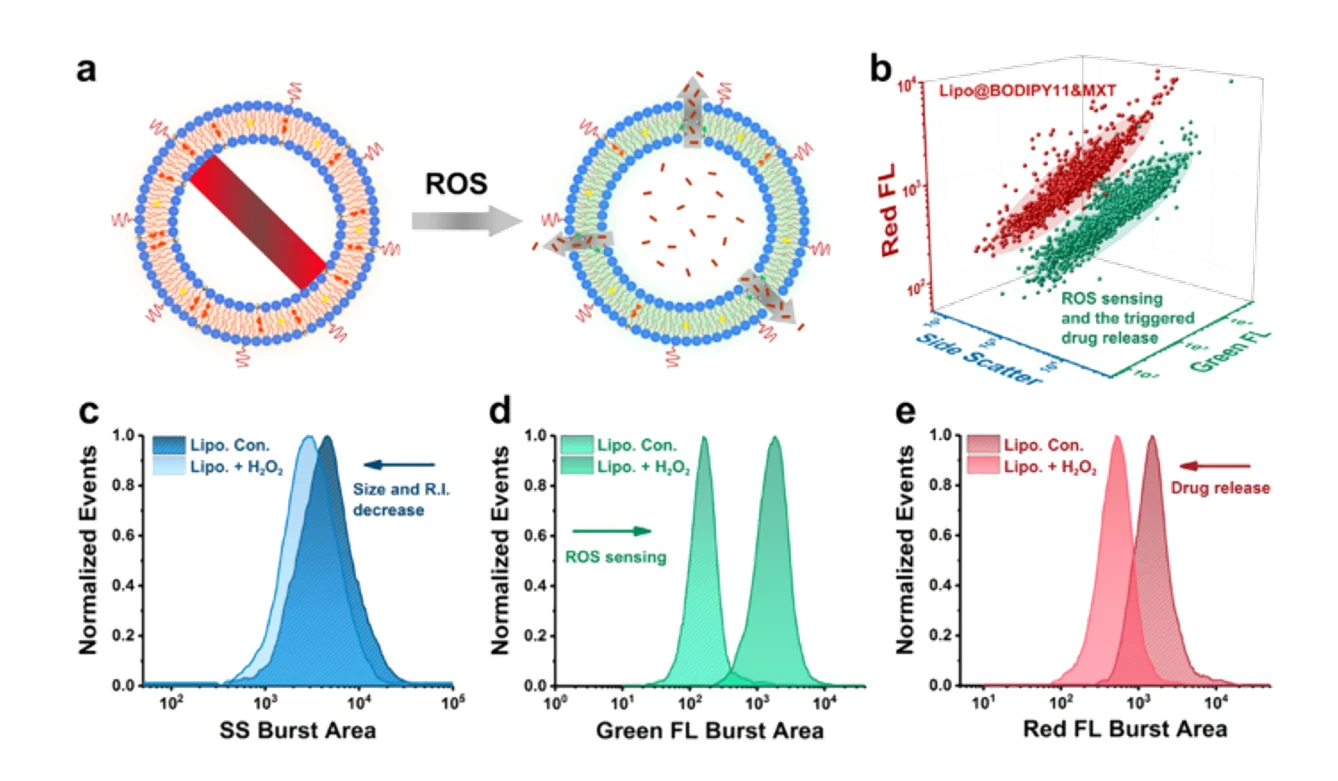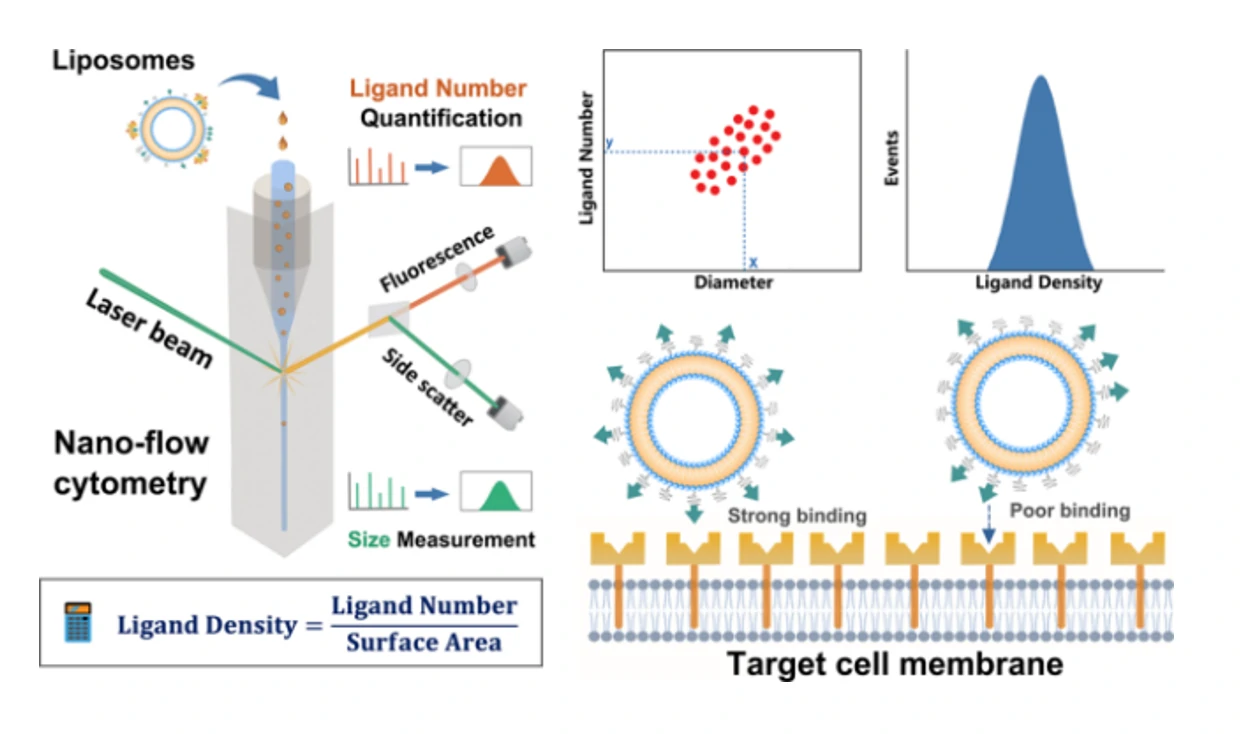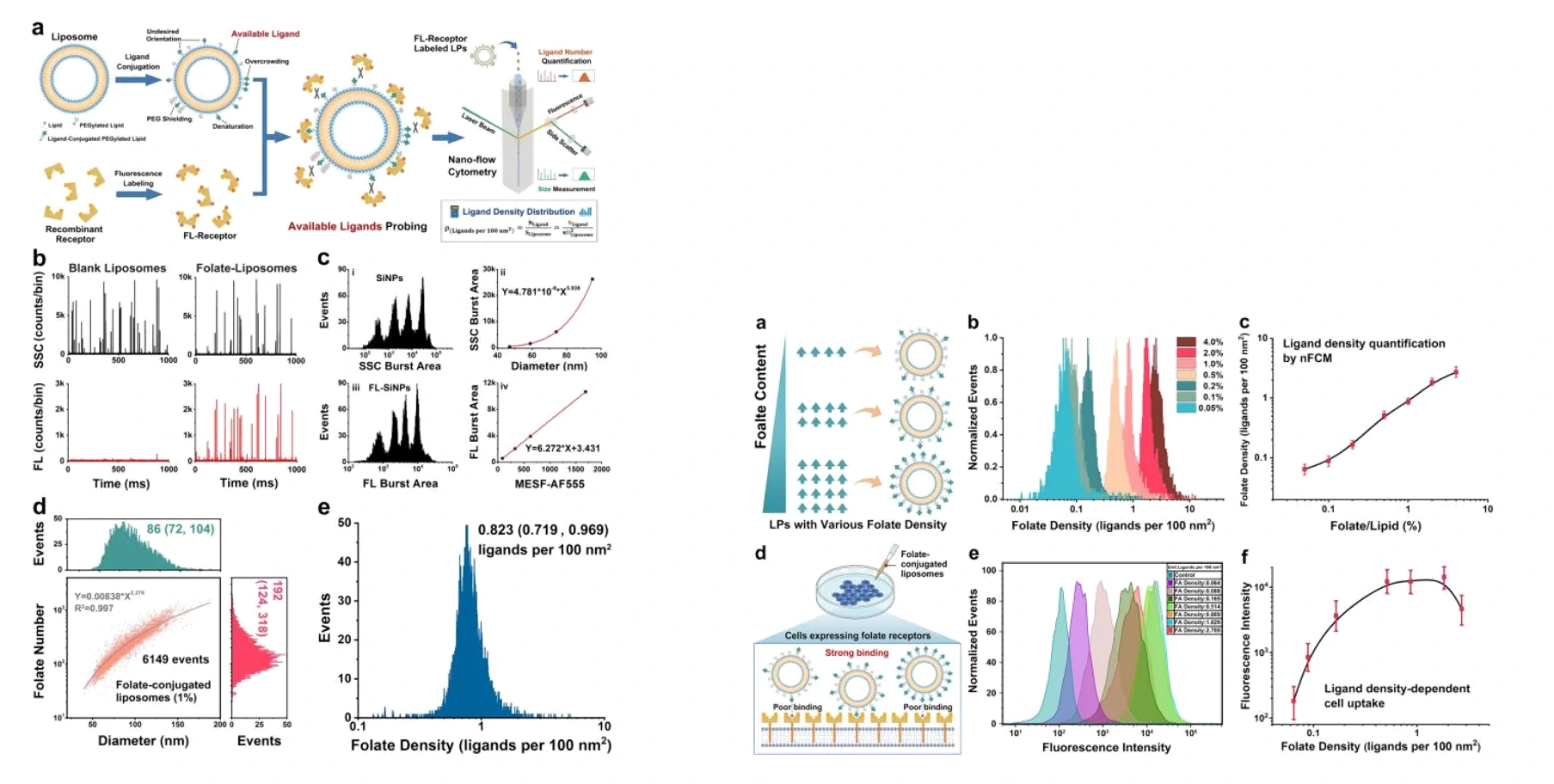Doxorubicin-carrying Liposomes
Author: admin Date: February 22, 2024
Characterization of Doxorubicin-Carrying Doxoves
In nanomedicine development, nanoparticles are utilized as carriers to deliver payloads such as therapeutic agents. Therefore, the simultaneous detection of both nanoparticles and their cargos is desirable. Doxil (doxorubicin-carrying liposomes) is the first FDA-approved nanomedicine (1995), and DLS and cryo-TEM are the two most commonly used methods for size analysis. While DLS is not suitable for heterogeneous samples, the three-dimensional (3D) reconstruction of cryo-TEM usually takes 2-3 days.
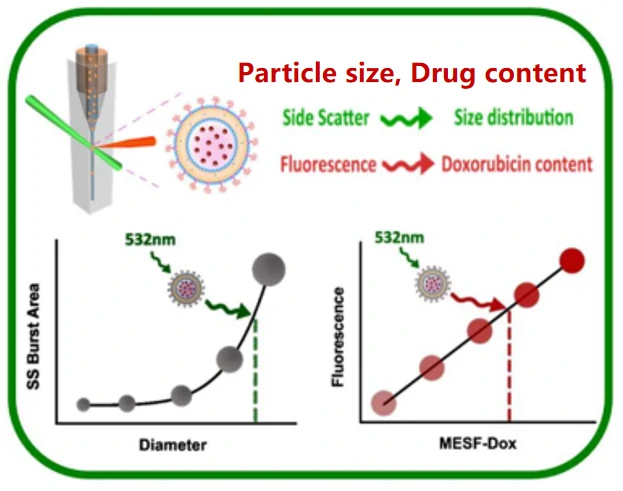
Multiparameter Quantification of Liposomes
A liposome is a tiny vesicle made from materials similar to a cell membrane. Drug-encapsulated liposomes have been considered the most clinically acceptable drug delivery systems. In this study, the Flow NanoAnalyzer was used to simultaneously detect the side-scatter and fluorescence signals generated by individual liposome particles at a speed of up to 10,000 nanoparticles/min. To address the size dependence of the refractive index of liposomes, different sizes of doxorubicin-loaded liposomes were fabricated and characterized to serve as calibration standards for measuring both particle size and drug content. This method provides a highly practical platform for the characterization of liposome vesicles.



